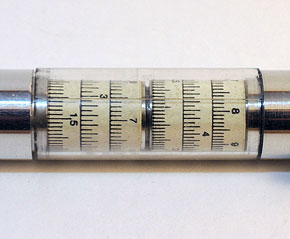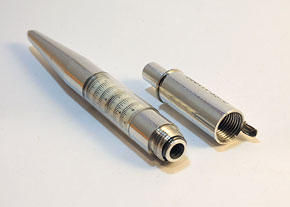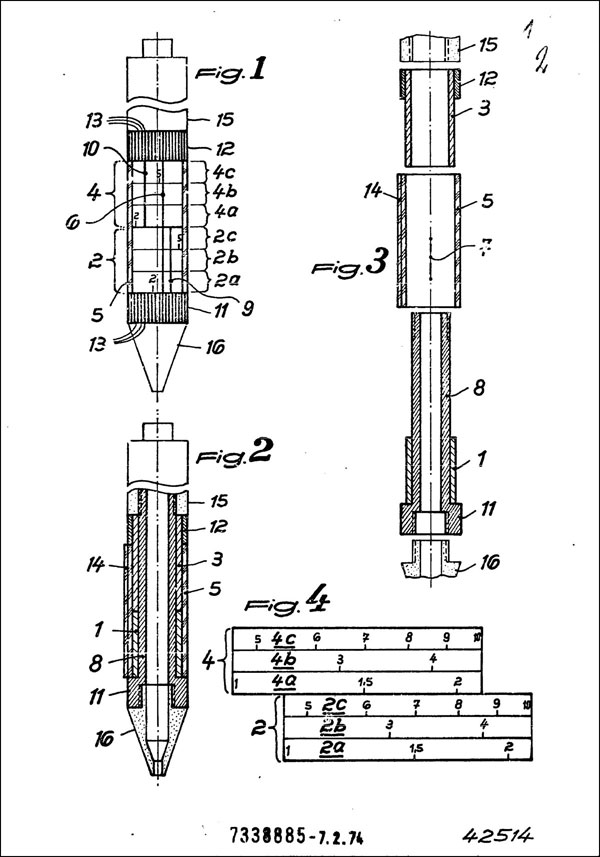 Up
Up
|
|

|

|
The Pose-Marre pen slide rule |
|
|
|
|
|
|
This article was originally published in the autumn 2020
issue of the UKSRC Slide Rule Gazette.
Pencil and Pen Slide Rules are a paradox. On the one hand, they are
highly inadequate for any serious engineering calculation, due to
the low precision imposed by their short scales. On the other, they
seem to have had an intense allure for the designers of a century
ago, who have tirelessly devoted their ingenuity to the patenting
and production of many different designs in this category . Which is
why pencil slide rules are fairly easy to come by today. |
|
|
|
 Click photo to enlarge |
|
|
|
The device As
seen in the photo, this is a metal pen, 12.7 cm long (excluding the
protruding plunger at the top, which screws in to extend the pen
refill) and 12 mm in diameter. The metal parts are machined with
great precision from solid rods of non-ferrous metal, probably a
hard aluminium alloy. The body consists of two halves that are
joined by a hollow pivot at the midpoint -- hollow, to allow the
refill to run down its centre. |
|
|
|

 Click a photo to enlarge |
|
|
|
 Click photo to enlarge |
|
|
|
The pen can be opened as you’d expect, by a screw joint, to put in the refill. The cap ring at the top can be unscrewed to release the pocket clip, and the plunger can be unscrewed all the way out. The photo below shows the component parts. |
|
|
|
 Click photo to enlarge |
|
|
|
Origins I’ve purchased this pen slide rule from a German collector, but he had no information about its origin. Furthermore, no collector I’ve asked had ever seen its like, and that includes the world expert on pencil slide rules (sadly, recently deceased), Rodger Shepherd. It took the patent-hunting expertise of Panagiotis Venetsianos to uncover Gebrauchsmuster (a kind of German patent) number 7338885, awarded in 1974 to Karl Opdenhövel .The drawings therein (see below) leave no doubt that Mr. Opdenhövel had invented the Pose-Marre pen, even though that name is nowhere listed in the document. |
|
|
|
 Click photo to enlarge |
|
|
|
It is strange that with patent in hand
Opdenhövel never went into production (as far as we can tell). In
fact, the device described here can’t be a production unit.
Consider:
We must conclude that this unit is a prototype, or possibly even
the patent model, and that for some reason it was never developed
into a commercial product. On second thought this may not be so
surprising, given the patent’s grant date of Feb. 7, 1974 -- two
years after the HP-35 calculator had rendered all slide rules
obsolete. |
|
|
|
Exhibit provenance: Bought this one from a fellow collector from Germany. More info: |
|
|
|
|
|
|
|
Home | HOC | Fractals | Miscellany | About | Contact Copyright © 2022 N. Zeldes. All rights reserved. |
|